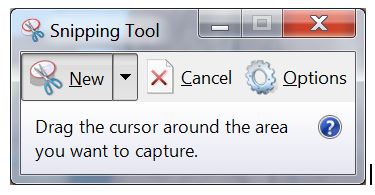Program That Manages Wireless Network For Mac X
Program That Manages Wireless Network For Mac X Patrick
Select the network name, from the Wireless Network list, or enter the SSIDof a hidden network. Select the desired protocols from the Authentication list box. Click the Enable 802.1X button. Much like everything else about OS X, connecting to a wireless network is painfully easy. But if you’re not familiar w/ OS X, and need to walk someone else through it, the following steps might prove helpful. When connecting your Mac to a wireless network, one of the first things you’ll want to.
 Finding a Snipping Tool for Mac. A snipping tool or screen shot tool is used to capture exactly what is on your screen at any moment in time. Screen shot tools are extremely useful if you want to show someone else how to do something on a computer, or explain a problem you are experiencing.
Finding a Snipping Tool for Mac. A snipping tool or screen shot tool is used to capture exactly what is on your screen at any moment in time. Screen shot tools are extremely useful if you want to show someone else how to do something on a computer, or explain a problem you are experiencing.
Release and renew your IP address If you seem to be connected to the network, but pages won't load, and especially if you get a warning about 'limited connectivity' or a 'self-assigned IP address', try to. Repair Wireless with Built-in Tools • In Windows 7, right-click the Network icon in the lower right corner of the screen and click Repair. • In macOS, click on the Airport menu (top right corner of the screen) and click Turn Off. Wait a few seconds, click on the Airport menu and click Turn On. Check for Stored Password Issues If you've changed your password recently (or since you were last on campus), you should definitely do the following. • On a college-owned Windows computer, make sure you're logged in with your current password by connecting to a wired connection, locking the computer (Win+L), then unlocking it with your new password.
Actually since starting to write this I've had a conversation and those switches are on a different subnet to the main network (layer 3?) - I'm not very experienced with all this can you tell? I'm quite confused now and might have to do some extra reading. The switches may have been assigned a managed address on a different VLAN. Switches do not always require an IP address and the assigned one is most often used for management purposes. Photos for mac download.
Our wireless vendor, Aruba, publishes a (if the link becomes out of date, search the web for Aruba compatibility).
Contents • • • • • • • • • • • • • • • • • Step 1. Check that Wireless is Turned On Many laptops have a switch on the side that disables wireless entirely. This can be useful but causes problems if it is accidentally pressed, often without anyone noticing. If the physical switch is on or you don't see one, make sure Airplane Mode is set to OFF (if applicable) and wireless is enabled (click on the Airport menu in the top right corner of the screen and if Turn On appears, click it). Check that the Networks Appear Your device should list available wireless networks including MiddleburyCollege and MiddleburyGuest.
• Width: It’ll be either 20 MHz or 40 MHz, which refers to the “wide” channel option that doubles throughput but requires two channels to function. Apple only allows its base stations to use wide channels in 5GHz. • Security: The acceptable methods for connecting appear, such as WPA and WEP. • Signal and Noise: Same as the numbers explained above, representing the strength of signal and noise. Again, the bigger the difference, the better the signal.
SHARE In this tutorial, we’ll see exactly how to configure and connect to WPA/WPA2-Enterprise networks in 10.5 Leopard and 10.6 Snow Leopard. A quick note about the screen shots: they are taken from 10.5; some windows differ in 10.6. Quickly connecting to an 802.1X network First, let’s see how easy it is to connect to an 802.1X network without creating a profile. If the only EAP type enabled by your RADIUS server is TLS, you must first install the client security certificate to Mac OS X. However, the PEAP and TTLS protocols don’t require this client-side certificate. Now to connect, select the wireless network from the AirPort menu on the top of the desktop as you would with any other network. If or TTLS is active, you’ll be prompted to login, as Figure 1 shows.